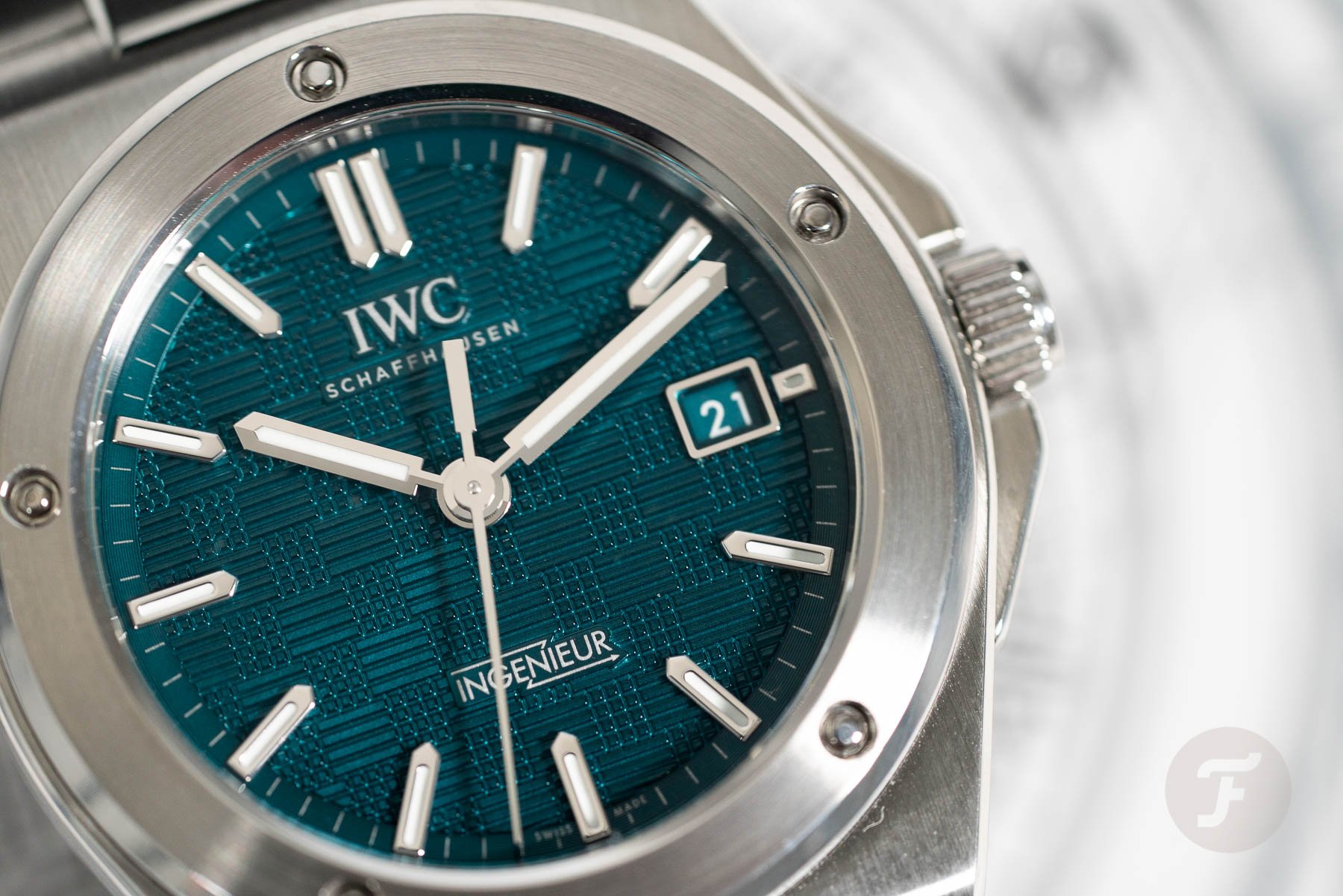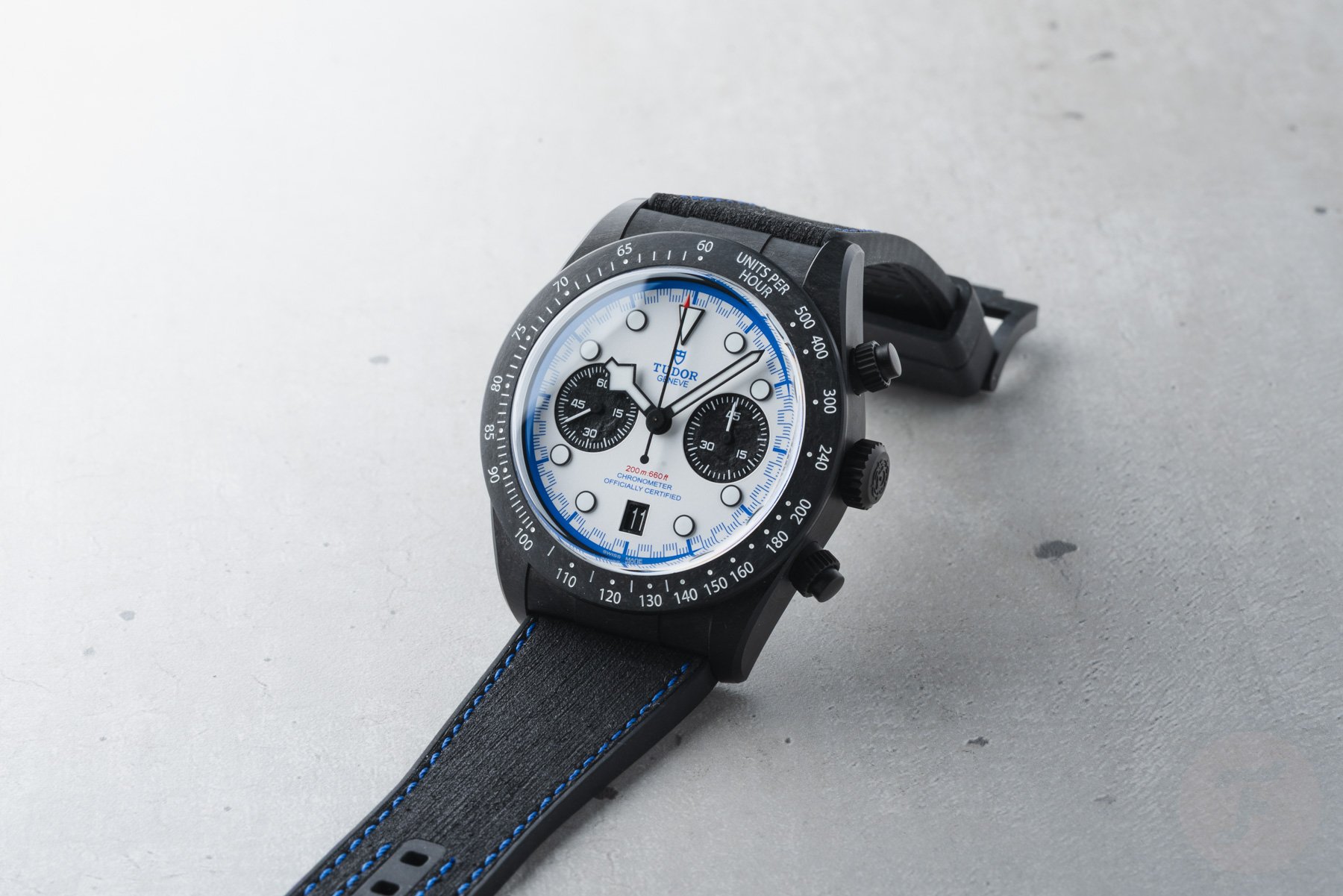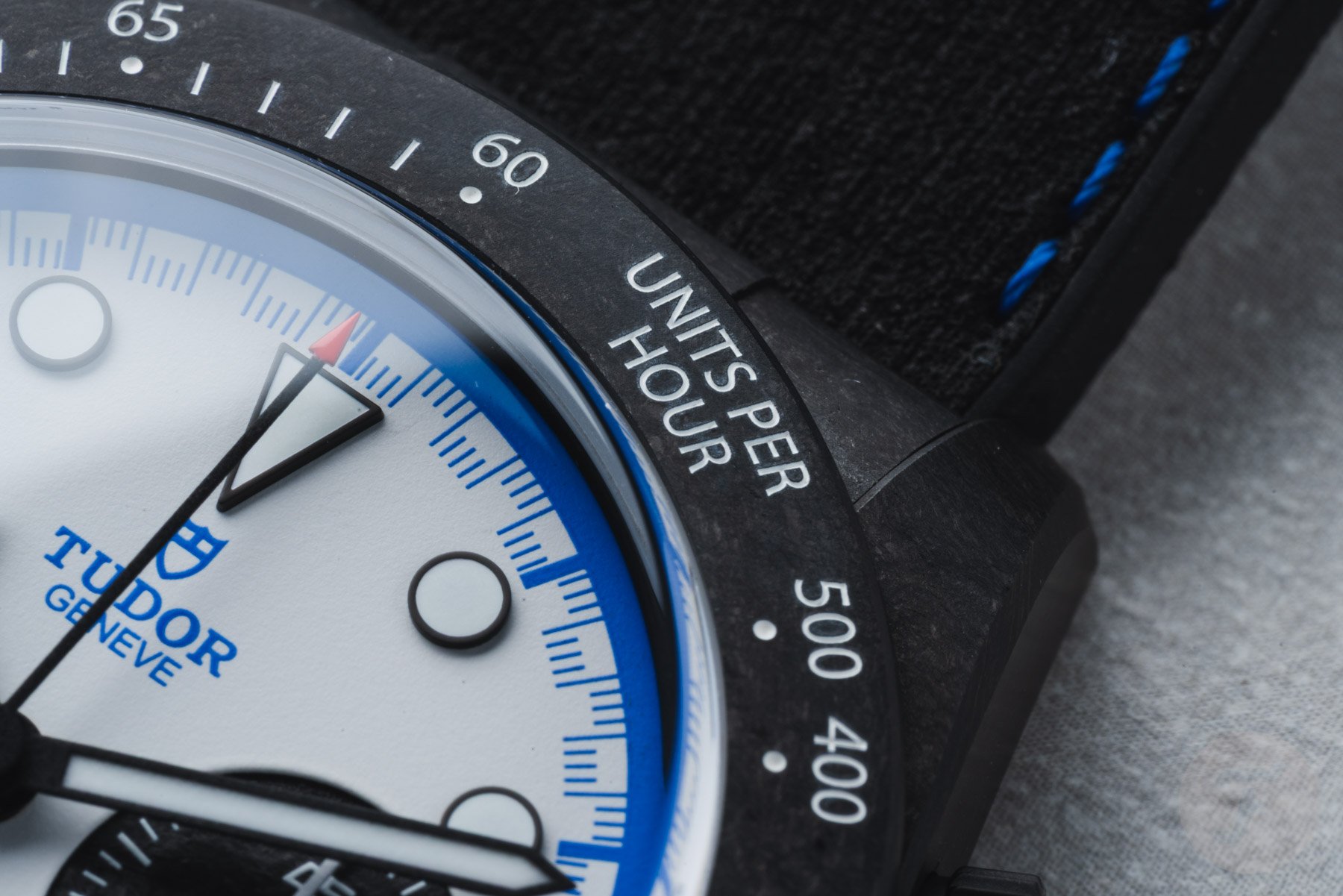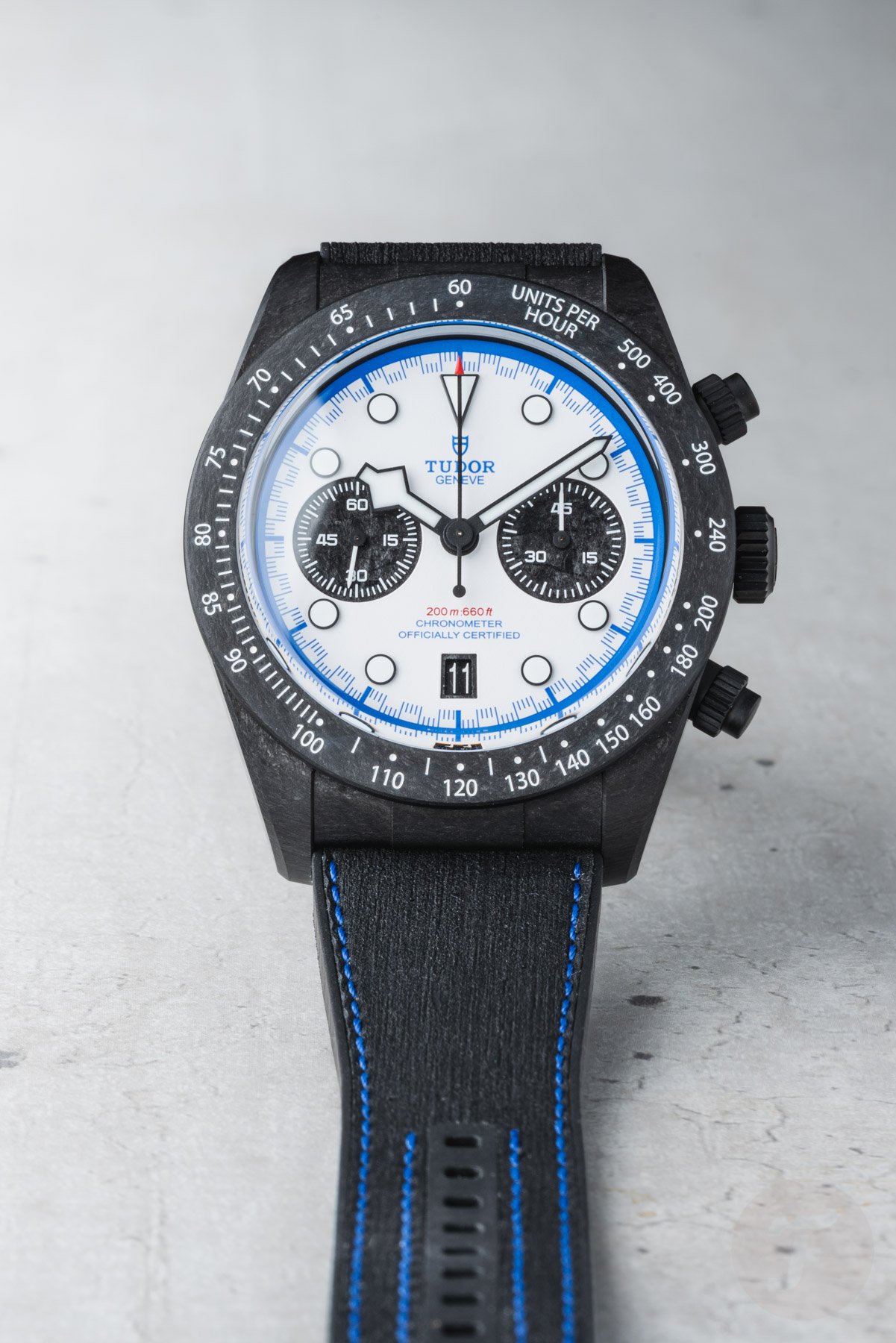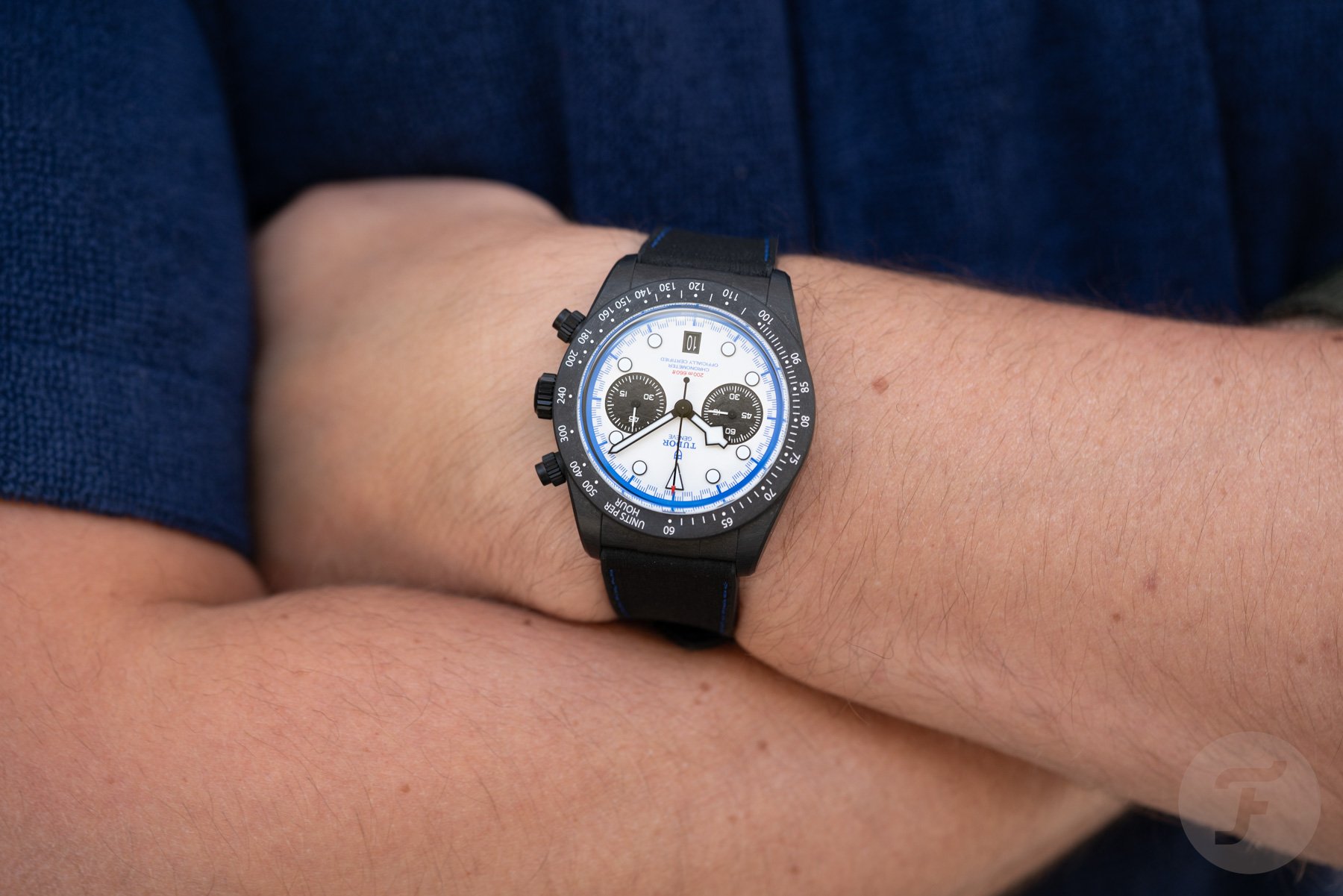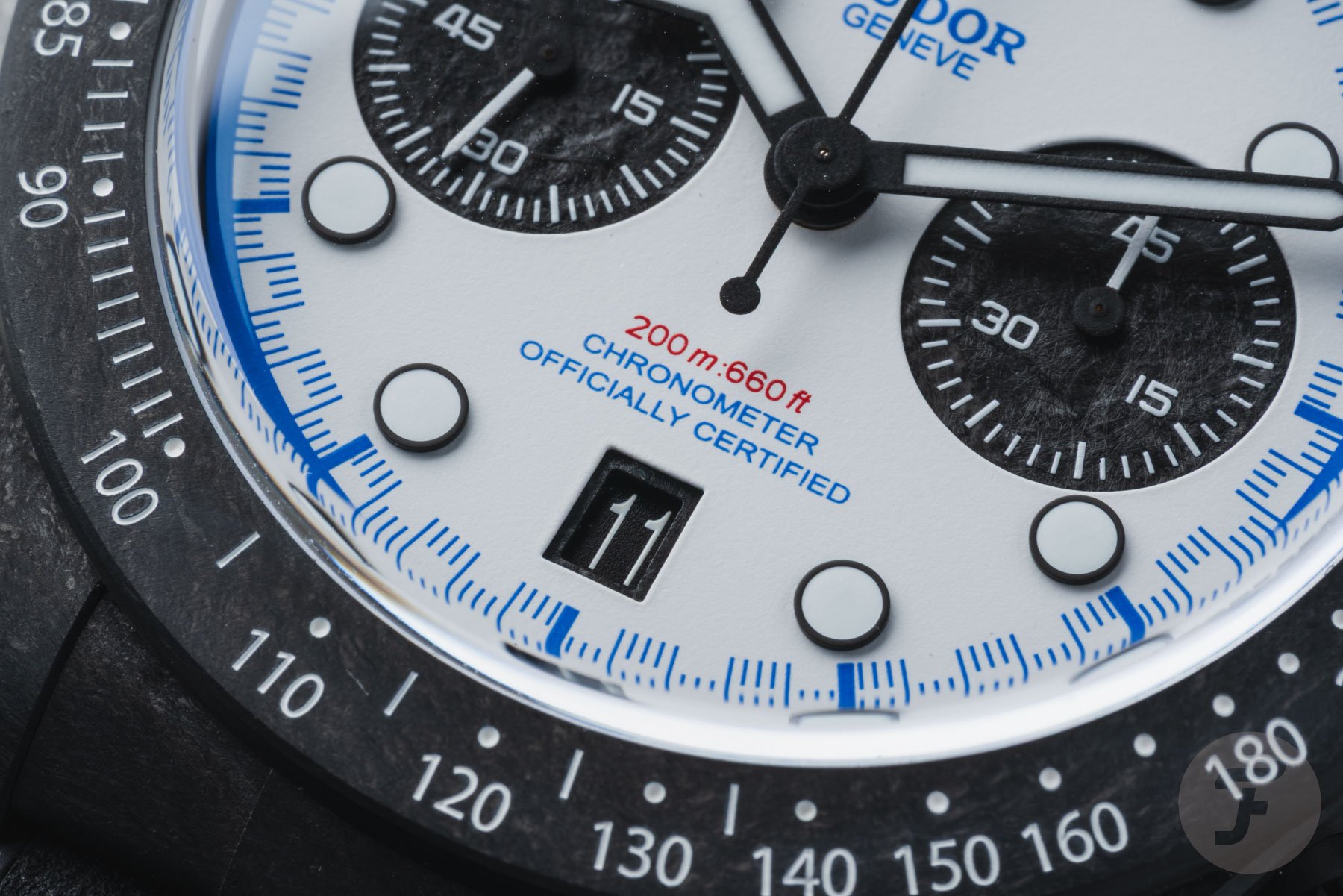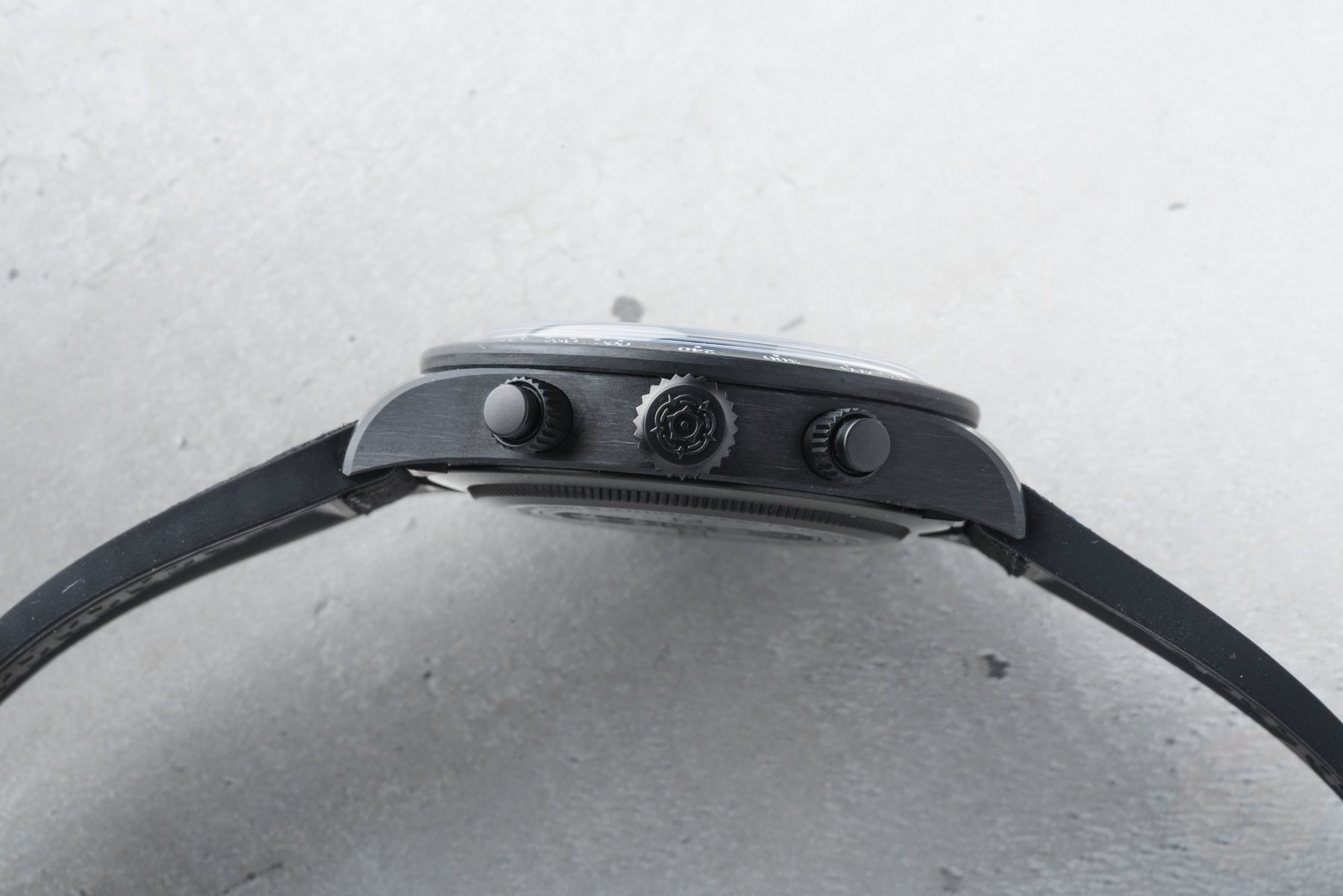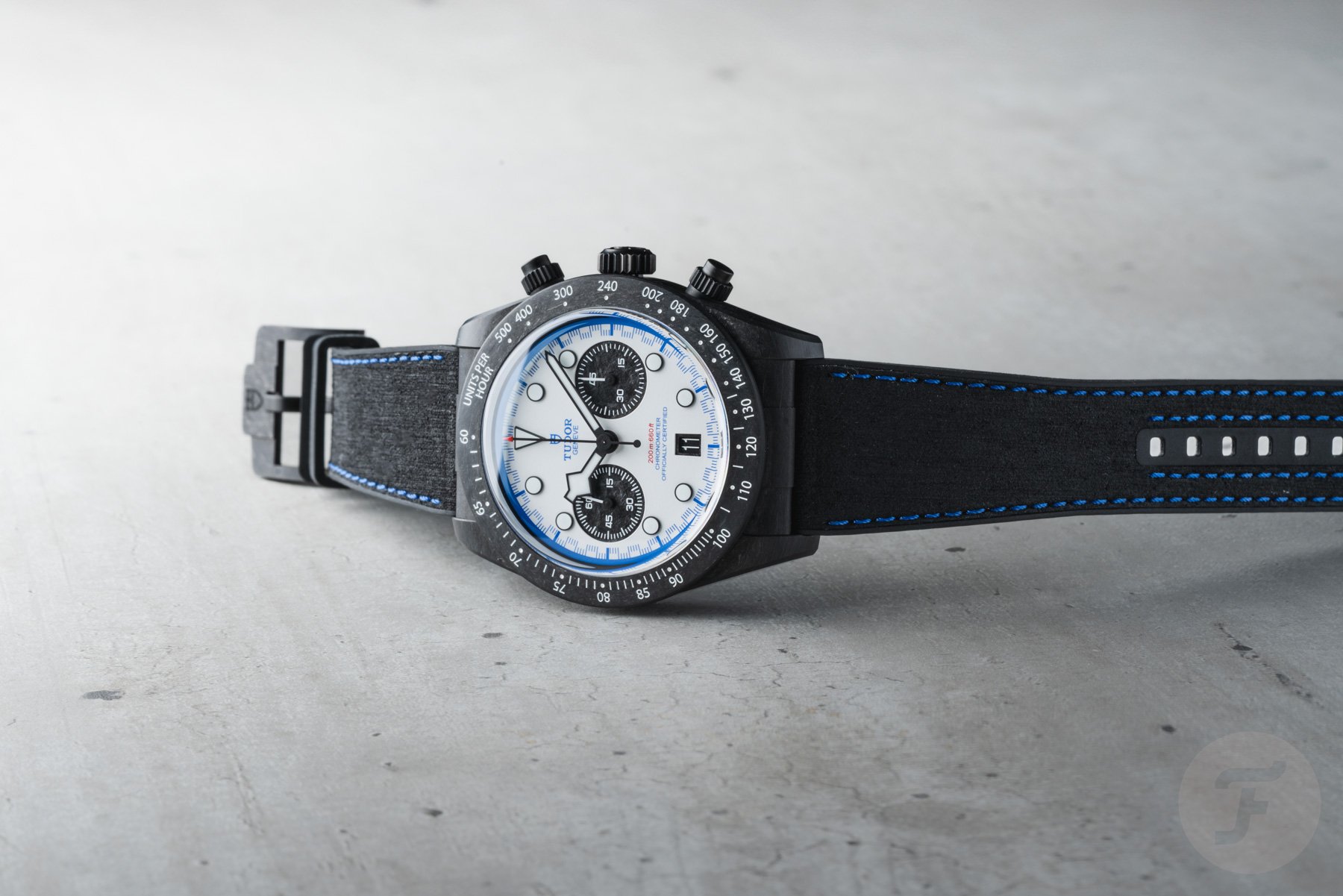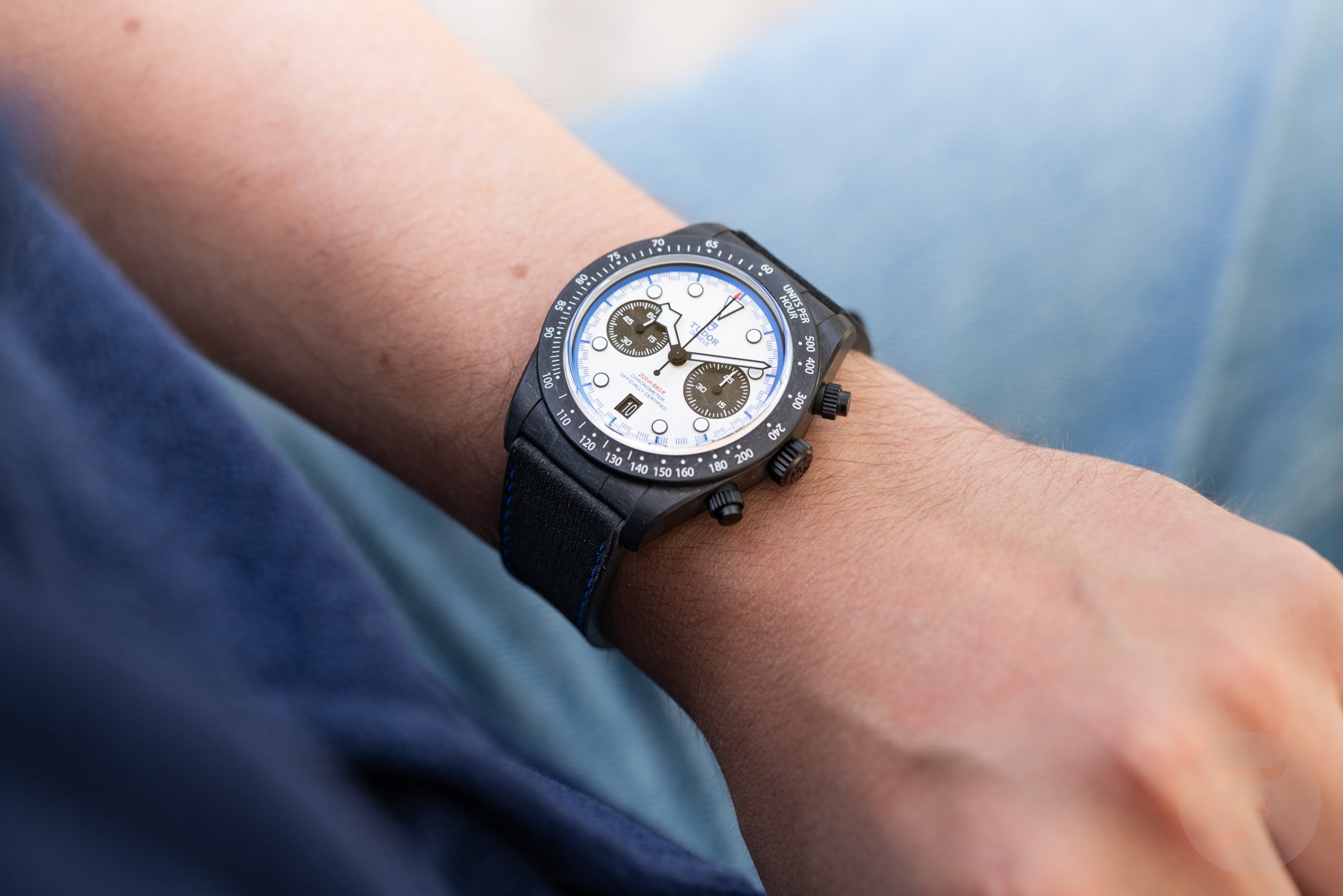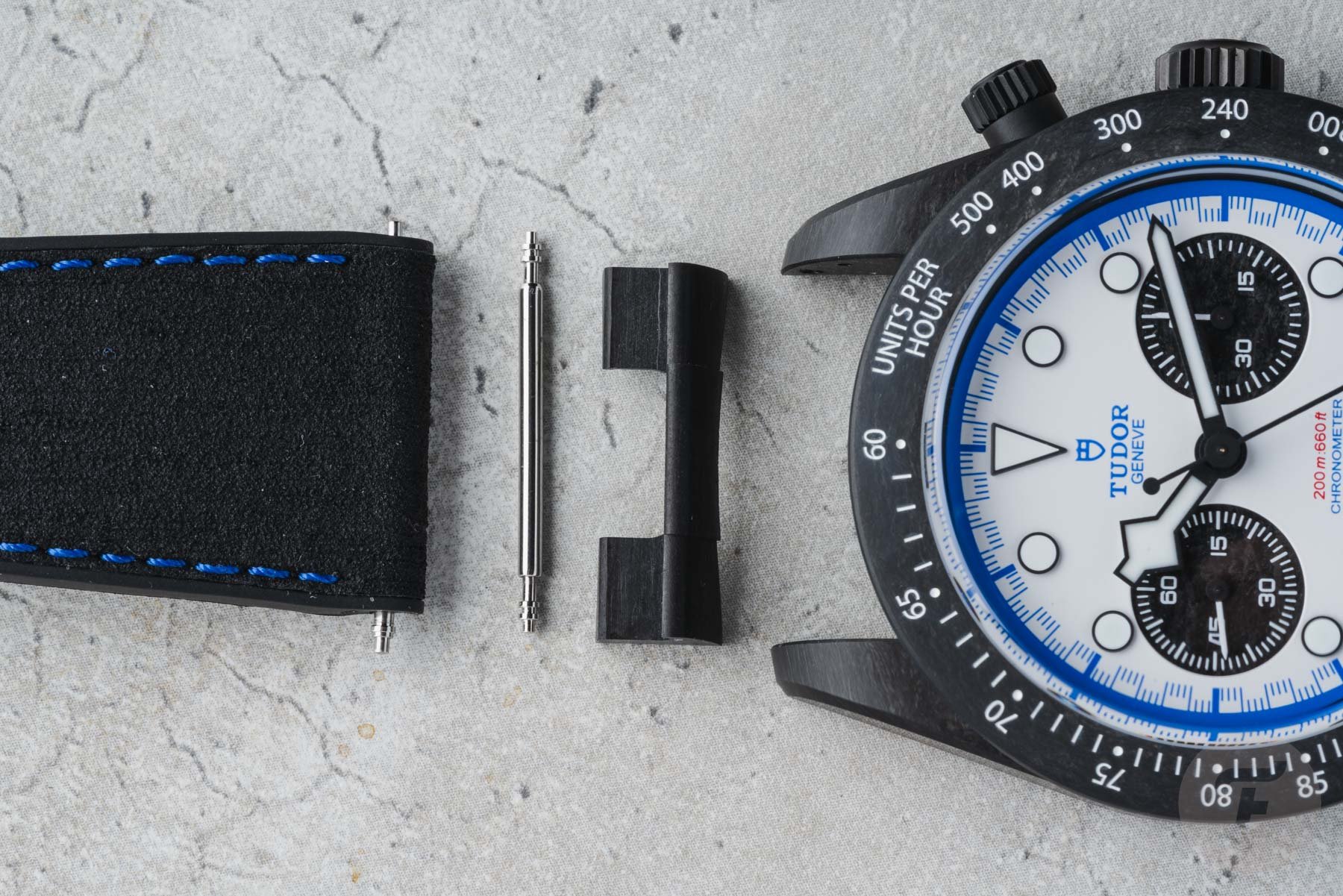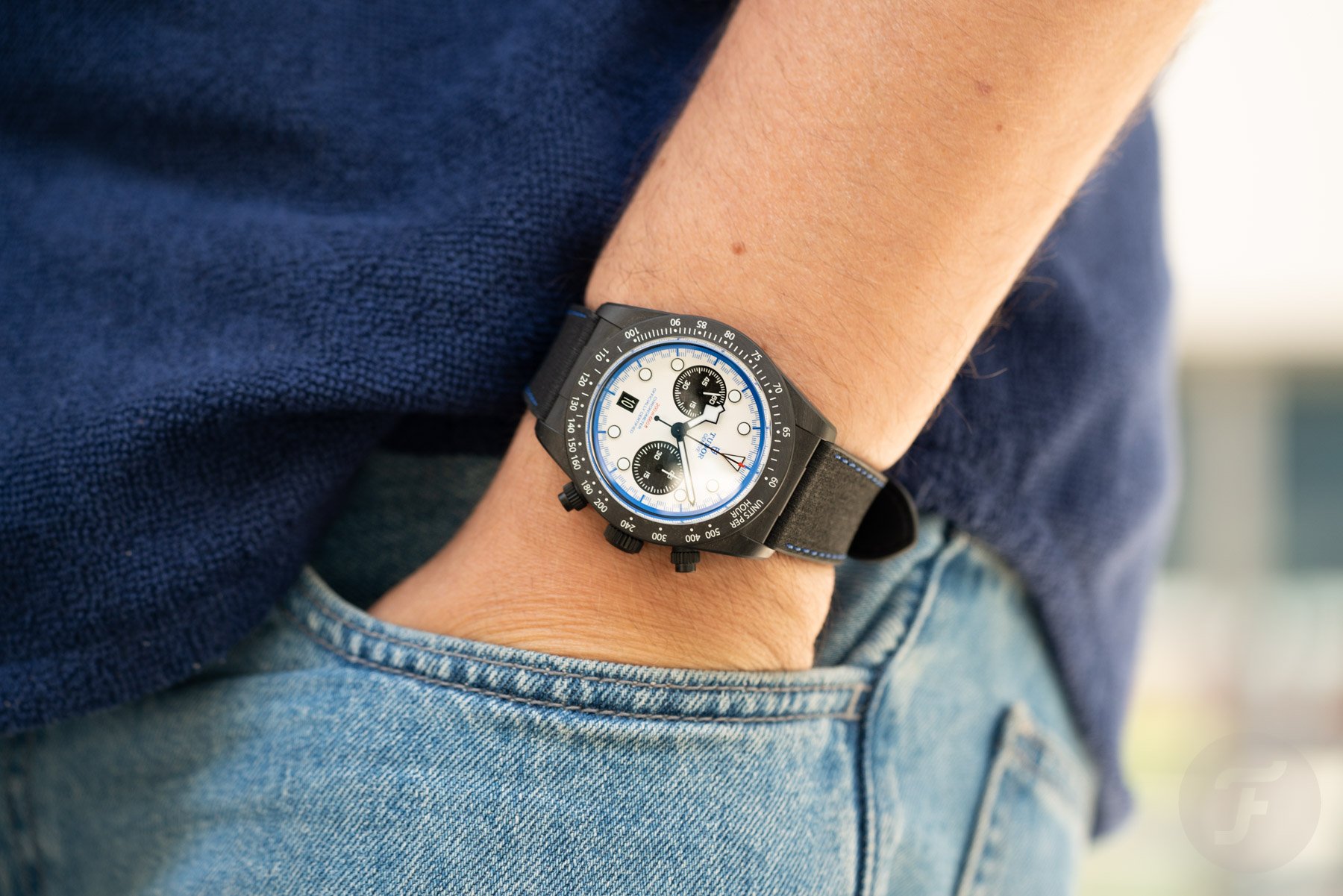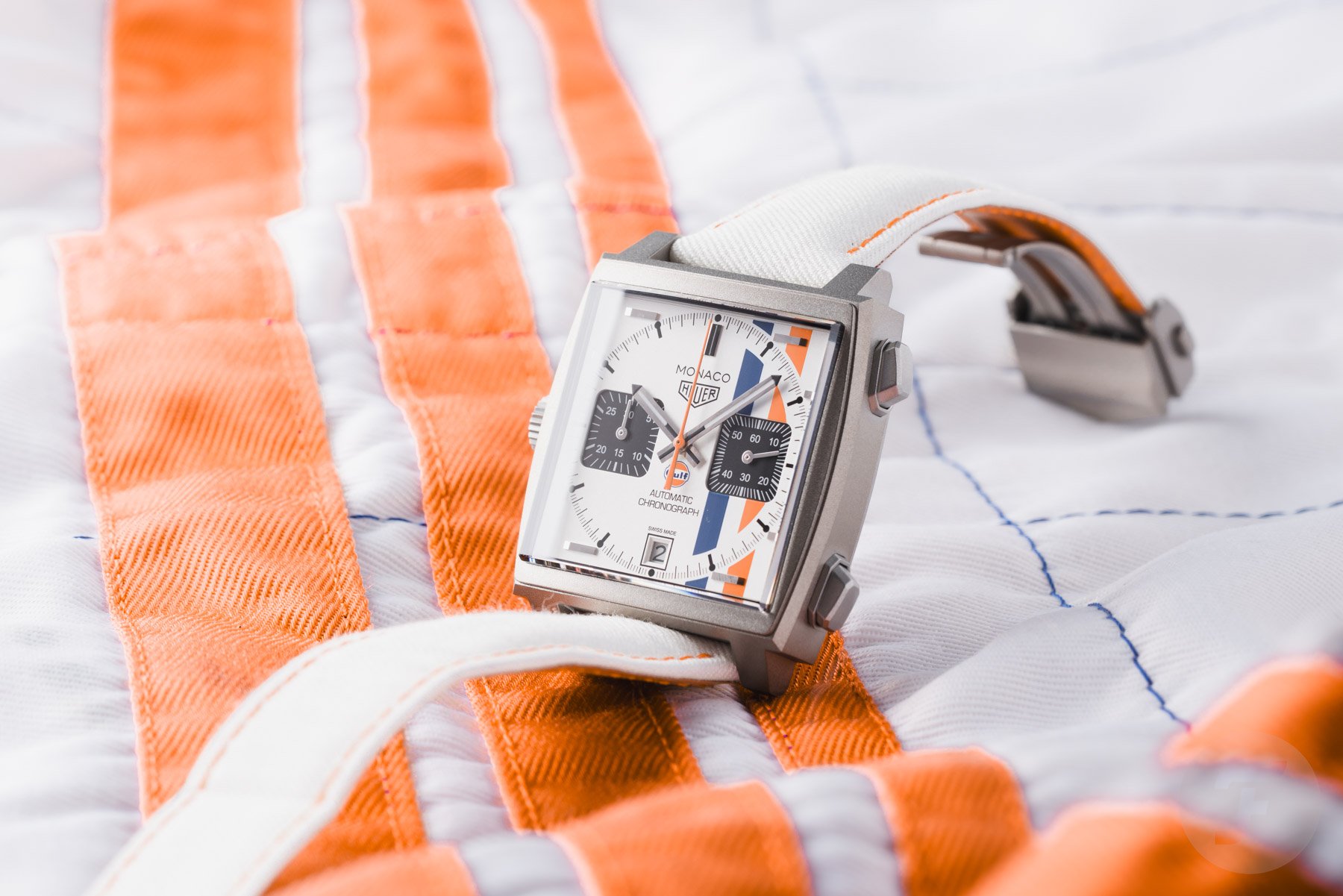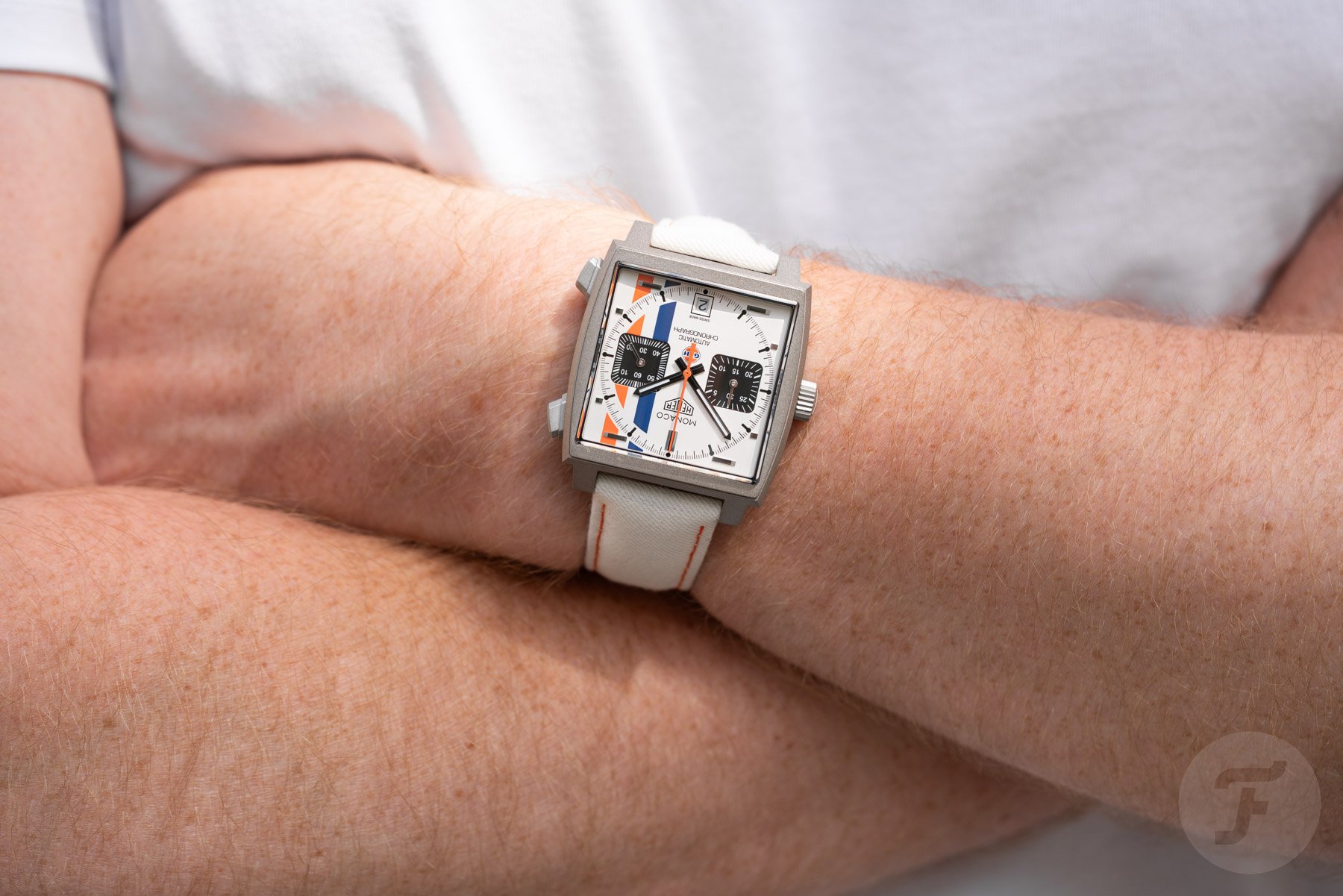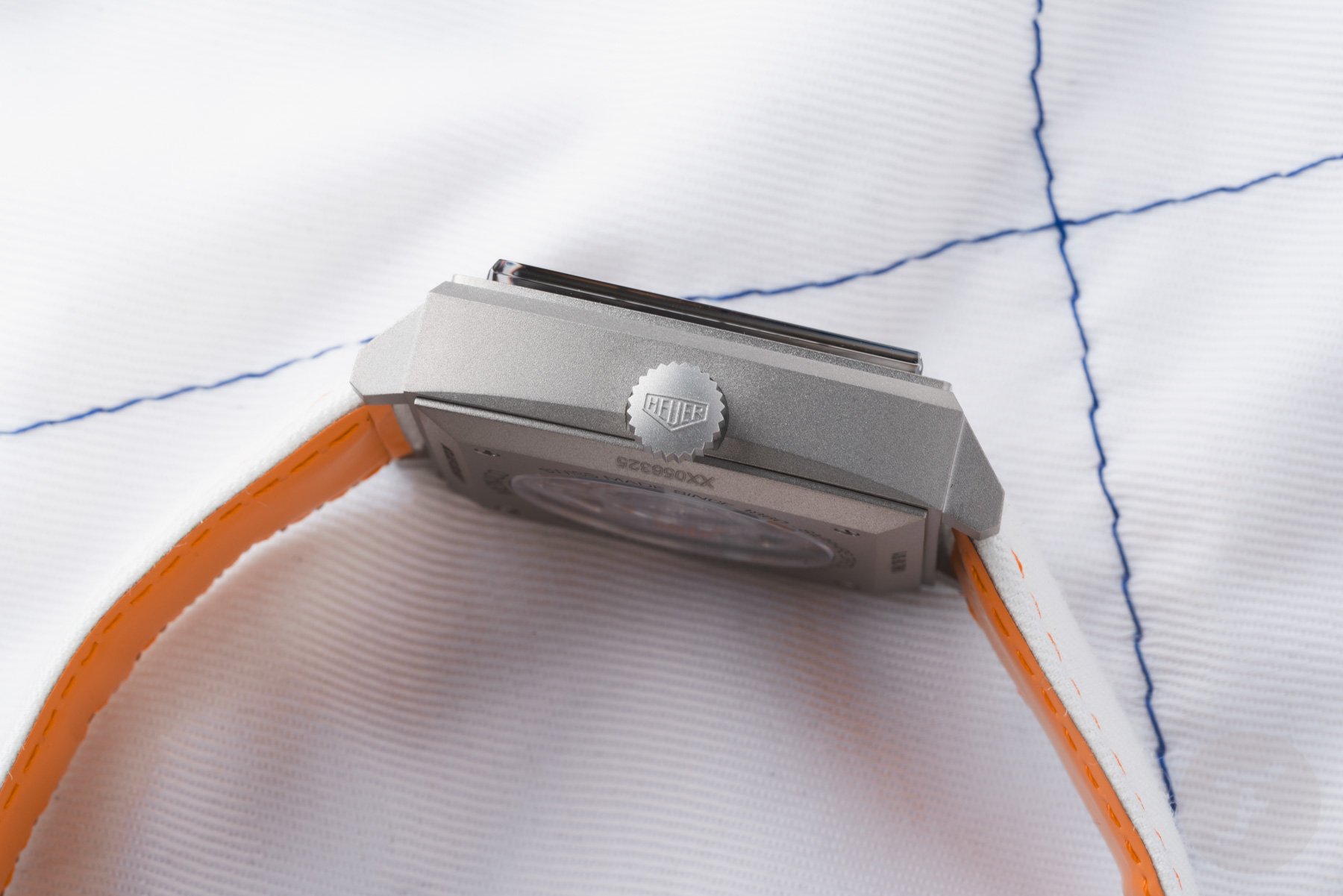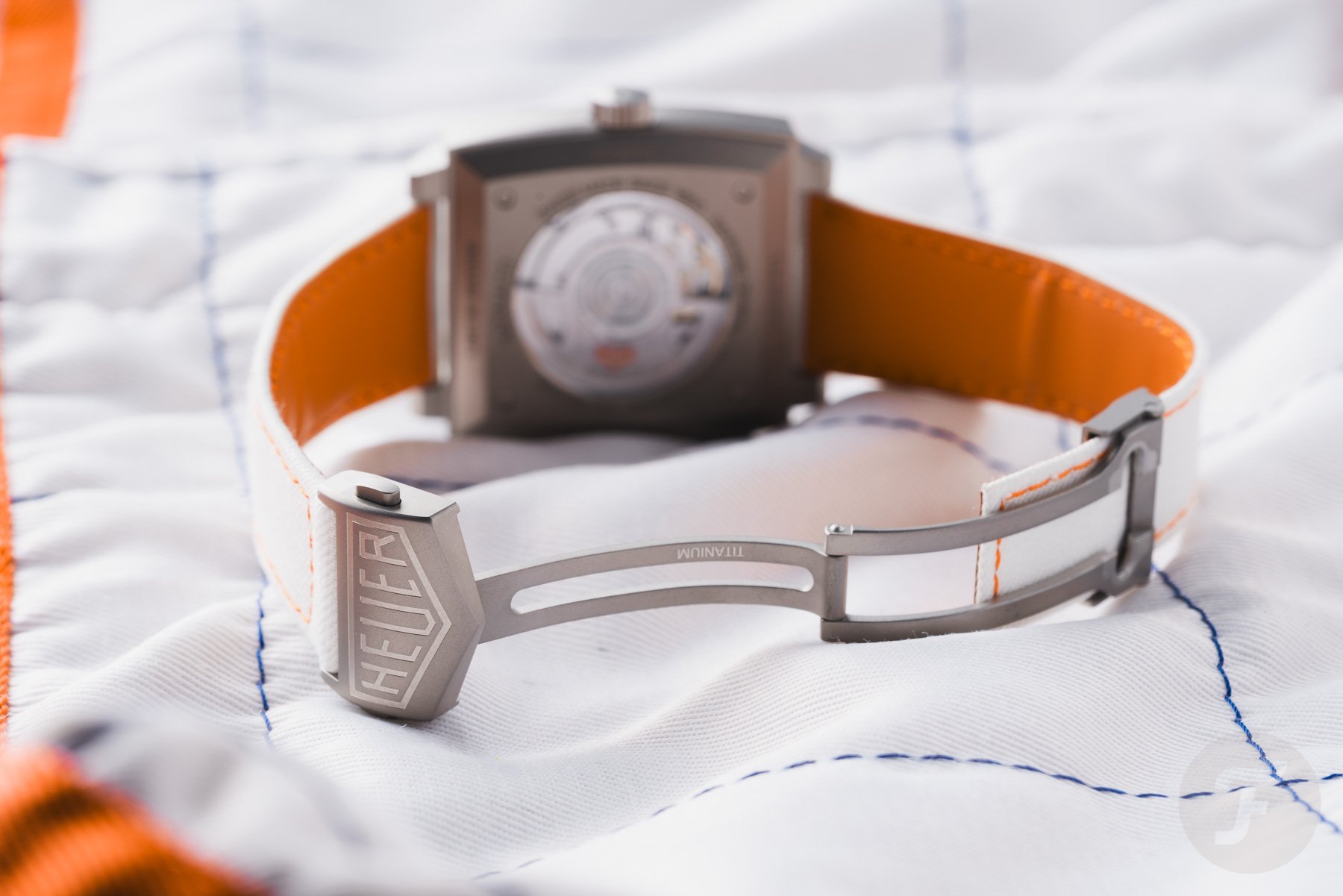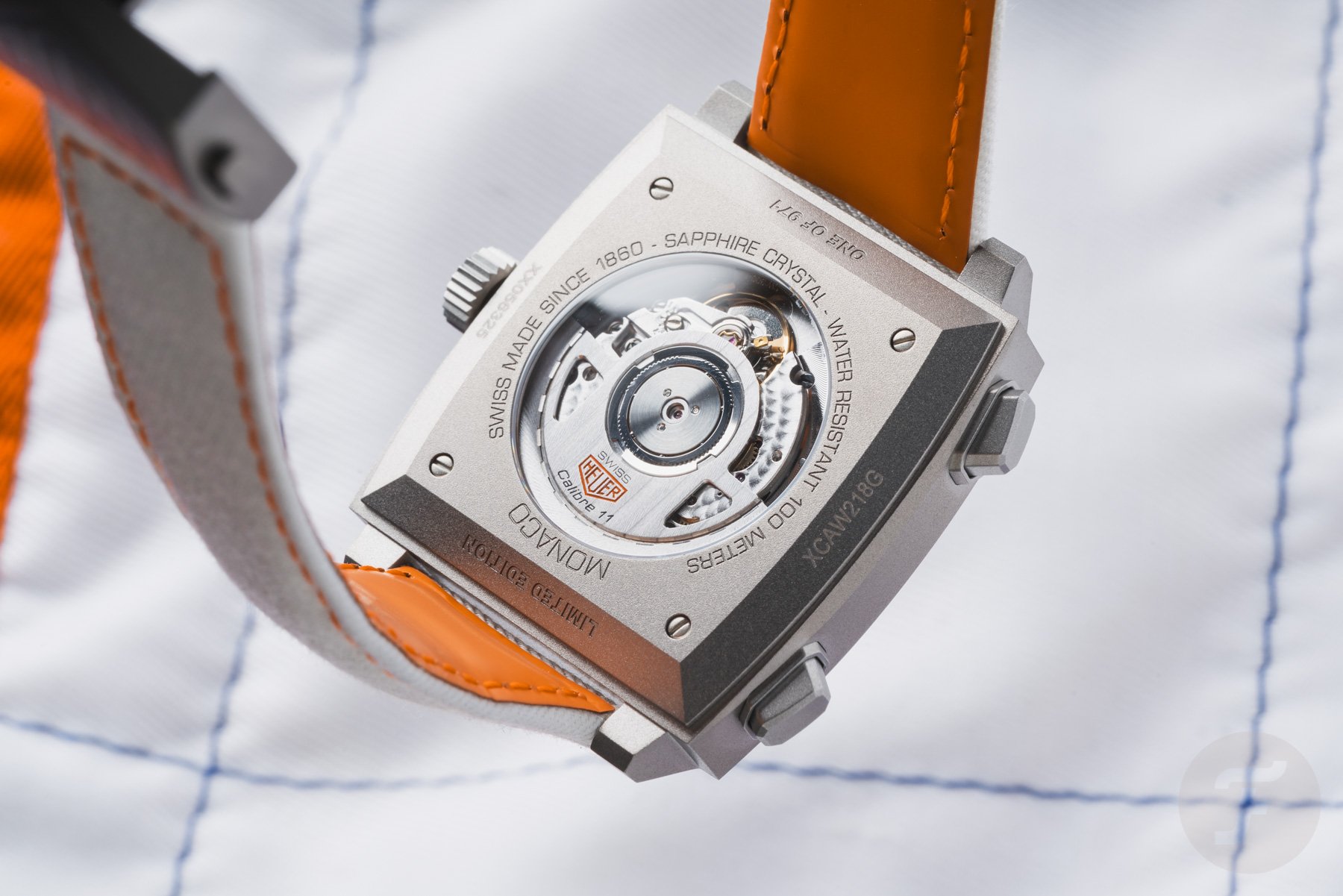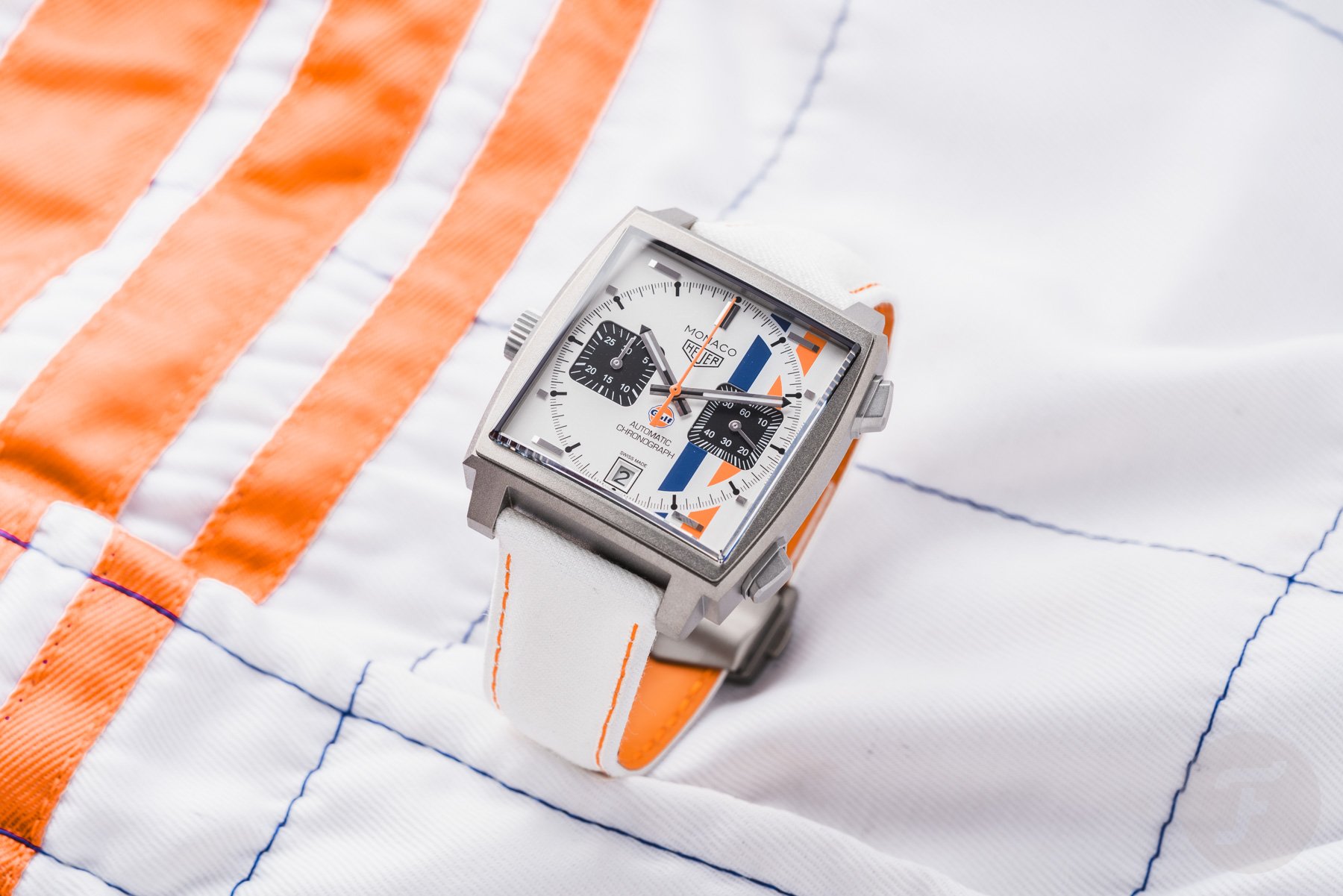Sunday Morning Showdown: TAG Heuer Monaco Chronograph × Gulf Vs. Tudor Black Bay Chrono “Carbon 25”
It’s Sunday morning, so fire up the engines and prepare for a nice weekend drive. The question is, what is the racing chronograph of choice for today? Two suggestions go head to head in this week’s Sunday Morning Showdown. Mike’s pick is the classic-looking TAG Heuer Monaco Chronograph × Gulf in titanium. This lightweight version of the Monaco came out not too long ago to celebrate the iconic Gulf livery. Jorg’s pick is the Tudor Black Bay Chrono “Carbon 25.” This lightweight version of the Black Bay Chronograph also debuted earlier this year. The watch was inspired by the livery of the Visa Cash App Racing Bulls F1 team. It’s a battle of old school vs. new school in this week’s Sunday Morning Showdown. Let’s get going!
This week’s battle of racing chronographs comes just one week before the Formula 1 Dutch Grand Prix at the famous Zandvoort circuit. One of today’s contenders might be spotted on the wrist of one of the Visa Cash App Racing Bulls F1 team drivers. The Tudor Black Bay Chrono “Carbon 25” is a completely redesigned and re-engineered carbon version of the Black Bay Chrono. It comes in at €7,460, making it one of the most expensive Tudor offerings. It goes up against the latest version of the TAG Heuer Monaco Chronograph × Gulf. This lightweight version of the iconic Monaco proudly wears the classic Gulf logo, accompanied by the instantly recognizable blue and orange stripes. This latest Monaco Gulf version is more expensive at €9,400. Now it’s over to Mike and Jorg for each to explain why his pick is the better of the two.
Last week, on Sunday Morning Showdown…
But first, here’s a quick look back at last week’s battle. In it, the IWC Ingenieur came out on top against the Chopard Alpine Eagle. The modern version of Gérald Genta’s famous Ingenieur took 56% of the votes versus 44% for the Alpine Eagle. A quick browse through the comments revealed that people seem to enjoy the cleaner looks of the IWC versus the more dressed-up looks of the Chopard with its textured dial and Roman numerals. While the margin was relatively small, it ended up as a clear victory for the Ingenieur. Let’s find out if today’s matchup is even closer.
Jorg: Tudor Black Bay Chrono “Carbon 25”
It’s straight to confession for me this Sunday morning: I wasn’t originally a fan of the Black Bay Chrono “Carbon 25.” My initial impressions were that it looked gimmicky. To be fair, that is not the case because this full-carbon version of the Black Bay Chrono doesn’t incorporate the VCARB F1 team logo or any of its visual design language other than the team colors. Still, that is where my initial doubts were. This combination of bright white with blue and red is simply not a color combination for me. At least, that is what I thought. When we visited the Rolex and Tudor offices a few months back, I had my first chance to wear it and witness it up close.
While I initially thought it was too loud and bright for me, this watch seriously surprised me with how refined it actually is. Sure, its colors alone do not make it modest by any stretch of the imagination. But the refinement of the dial is rather stunning in real life. Additionally, as Thomas explained in his hands-on review, the newly developed carbon fiber case is much less flaky and three-dimensional in appearance than comparable offerings from other brands. The combination of both makes this watch so much better than I initially thought.
A new carbon fiber case for the Black Bay Chrono “Carbon 25”
Let’s start with Tudor’s biggest tour de force for this Black Bay Chrono. The brand completely redesigned and re-engineered the carbon case. While it still looks like a Black Bay Chrono, this new lightweight version works very well with slightly different proportions.
The designers at Tudor increased the size to 42mm compared to 41mm for the stainless steel versions. Additionally, the case is ever so slightly slimmer, coming in at 14.3mm versus 14.4mm for the regular models. The case features an integrated tachymeter bezel and a 200m water resistance rating. The crown, pushers, and case back are made of titanium and feature a black PVD coating to match the black case.
Inside the case lies a dial inspired by the colors of the VCARB F1 team. The white opaline dial is a super-crisp backdrop for the blue and red details to pop. As you can see, the bright blue outer ring and the racing-style blue minute/seconds track contrast nicely with the white opaline dial.
The logo and text are printed in the same bright blue, while the depth rating is printed in bright red for an extra pop of color. This latter detail corresponds with the red tip of the central chronograph hand. The hands and applied indexes are black with white Super-LumiNova. Lastly, the two sub-dials and the date window’s frame are also executed in carbon fiber.
The dial of the Black Bay Chrono “Carbon 25” takes some time to get used to
More blue comes in the form of the stitching of the hybrid rubber-leather strap with case-matching carbon end links. While this strap finishes the watch’s look in style, it adds more blue to the mix. The combination of opaline white and blue is a rather bright contrast that I had to get used to for a bit. I tend to like darker, more saturated colors over very bright ones, so this was a lot to take in. But the press images in the intro article I wrote proved to be slightly more colorful than this watch looks in real life. From the second I picked it up, I went from pleasantly surprised to seriously impressed in a matter of seconds.
The Black Bay Chrono “Carbon 25” is incredibly lightweight and looks much more refined than I first thought. As a result, it left a lasting impression as soon as I put it on my wrist. Thanks to its low weight for its size and proportions, it is extremely wearable. It’s this great comfort that makes it so much easier to wear than the TAG Heuer Monaco. While I was pleasantly surprised by the titanium Monaco Chronograph Racing Green, it is still no match for the comfort of the Black Bay Chrono “Carbon 25.”
The COSC-certified Tudor MT5813
Movement-wise, I also prefer Tudor’s chronometer-certified MT5813. This automatic caliber is based on the Breitling B01, which has a column wheel and a silicon balance spring. It operates at 28,800vph and offers 70 hours of power reserve. Tudor has tested the MT5813 to run at an accuracy of -2 to +4 seconds per day. If you ask me, it’s the better choice over TAG Heuer’s Sellita-based caliber with an added Dubois-Dépraz module. That results in a movement sandwich that makes the Monaco chunkier than the Black Bay Chrono “Carbon 25” and lacks the performance to match the MT5813. Sure, it keeps the classic configuration of the Monaco intact, but that’s maybe also where the issue lies.
The Tudor Black Bay Chrono “Carbon 25” is a modern racing chronograph in every sense, from the newly developed case to the caliber to the colors and even the comfortable strap. It makes the Monaco seem like a racing chronograph that is stuck in the past, not only in terms of its livery but also its tech. While I understand the sentiment behind the link between TAG Heuer and the historical oil and gas company, it doesn’t feel as relevant and advanced as the Tudor does. Knowing that you can also save a chunk of money by choosing the Black Bay Chrono “Carbon 25” makes this week’s choice easy for me.
Mike: TAG Heuer Monaco Chronograph × Gulf
Today’s matchup between the Tudor Black Bay Chrono “Carbon 25” and the TAG Heuer Monaco Chronograph × Gulf is a tough one. Frankly, the Tudor may run away with it, but this is why we play the game. As Darrell Waltrip loves to say, “Boogity, boogity, boogity! Let’s go racin’, boys!”
Let’s recap some basic facts. Both chronographs are large, thick, and limited. The Tudor clocks in at 42mm by 50.8mm, which makes it a seriously large slab for the wrist. Its carbon construction no doubt helps, but let’s ensure we don’t confuse this chronograph with its distant relative, the Rolex Daytona. Inside, the watch has a nice movement, but it’s a borrowed caliber from Breitling. That’s not a demerit, especially with a COSC rating and 70 hours of power reserve. Still, we’d love to see Tudor introduce an in-house version that brings the thickness down from the reported 14.3mm. With 2,025 pieces produced to celebrate the brand’s sponsorship of Red Bull’s second F1 team, we’ll see how these sell. Thankfully, collaborative branding is relegated to the case back.
Back to the TAG
With the Monaco, there’s no question about the collaborative partner. TAG Heuer has been here before with Gulf, but not quite like this. The watch has a bright silvery-white dial with the familiar orange and blue stripes running down the right side. Then, one of the most famous sponsors in racing, Gulf, has its logo below the central pinion.
From that description, the word “kitsch” comes to mind. Yet, this is probably the cleanest ode to the brand’s participation in the movie Le Mans. The black details are crisp and instrument-like, which helps the watch avoid cartoon comparisons.
A blasted titanium case
This Monaco has a Grade 2 titanium case measuring 39mm wide by 47.44mm from lug to lug, which makes it a bit smaller than the Carbon 25. Yes, the case is uniquely shaped, but like it or not, that’s the calling card for this TAG model. If we return to the case material, the use of a blasted surface echoes the instrument-like dial with its no-nonsense appearance. Sure, carbon is lighter and possibly more exotic, but titanium is no slouch. Both are used extensively in race cars. Plus, from my perspective, titanium has a more traditional look and strikes me as more wearable.
Another fun addition to the Monaco is the white Nomex strap. Honestly, it’s a badass move. The use of the flame-retardant material seems obvious, and I’m surprised it hasn’t been offered before now. For those who are concerned about dirtying the washable fabric, a blue perforated leather strap with orange stitching is included. Finally, the bold push-button titanium buckle, shaped as an iconic Heuer shield, finishes the watch perfectly.
The movement is no surprise
The Monaco is a chunky nugget at 15mm thick, which is somewhat historically comparable to the original Caliber 11 models. The latest Caliber 11 automatic, however, is a different modular automatic movement. It’s a Sellita SW300-1 base with a Dubois-Dépraz chronograph module and has 40 hours of power reserve. I’ll admit, the Tudor lords over the TAG in the movement department. However, the sacrifice has been made to afford the watch its famous look of a crown on the right side and pushers on the left.
Time to choose
TAG Heuer’s Monaco carries a relatively hefty premium over the Tudor. At €9,400, this version is almost €2,000 more than the Carbon 25. With just 971 pieces on sale, though, it is far more limited. To me, it’s the more attractive and special watch, but as always, my vote only counts as one. It’s time for you to choose between these racing-inspired chronographs. Will you opt for a lightweight modern model or a retro-infused collab with a blasted metal case? Cast your vote, and feel free to let us know why you chose your race winner.

